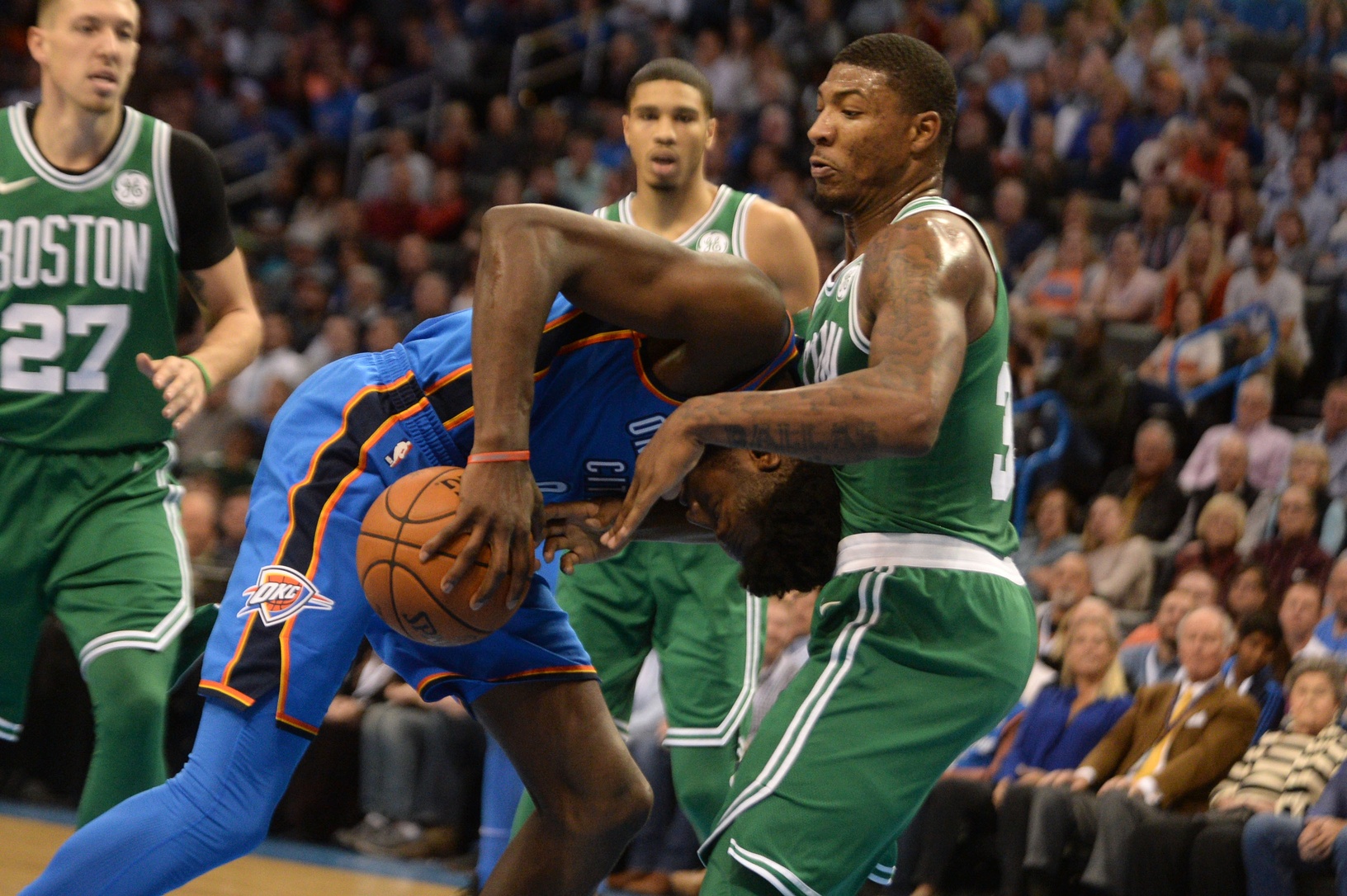Last night the Celtics became the only team in the NBA to win seven straight games after dropping their first two. They currently have the best record in the league, and it is almost entirely due to a surprisingly great defense that, like their record, is the best in the league.
A year ago, the Celtics were 5-4 after nine games. Like this year’s team with Gordon Hayward, the Celtics were dealing with an injury to Al Horford (concussion) that would cost him a lot of time early on. However, this year’s team has been able to compensate for the loss of Hayward with some pretty good production out of Jayson Tatum and Jaylen Brown. This year’s wing depth is much more prepared to handle the loss of a wing player than last year’s roster could handle the loss of Horford. Tyler Zeller was called on to fill in last year… that’s… not good.
I digress, though. The ol’ eye test tells us the defense has been shockingly good this year. Active, longer wings, a much more mobile center, and a re-energized Al Horford just look good out there. The numbers back it up.
Last year, the Celtics gave up 105 points per game. So far this year, it’s 93.8. Let’s round it up to 94 and say there are 11 points the Celtics AREN’T giving up. Where they coming from?
Again, the Celtics defense has two components it didn’t have last year: more length, and more athleticism. This shows up in two places… rebounding and fouls:
- The Celtics are giving up 8.7 offensive rebounds per game this year. Last year they gave up 10.7.
- The Celtics are grabbing 47.3 defensive rebounds per game this year. Last year, they got 41.8.
- The Celtics are allowing 19.1 free throw attempts (14.2 makes) per game this year. Last year they allowed 24.8 (19.1 makes)
More athletic players get into position and get stops versus fouling. Stops can include missed shots, turnovers, and shots just not taken (i.e. a guy drives, an athletic player stops the drive without fouling, forcing a kick out and a more difficult shot by someone else). Longer players challenge shots rather than hit arms. They also prevent certain shots from being attempted at all. In the end, the Celtics aren’t fouling as much, which means they’re giving up five fewer gift points per game.
Preventing offensive rebounds and clearing the defensive boards leads to ends of opponent possessions. The rebounding this year has been significantly better, something I recently detailed on my Facebook page:
1: Aron Baynes has good anticipation and is more than willing to turn and box out. These are basic skills that, sadly, aren’t very well applied in the NBA.
2: Baynes and Horford have been really good at challenging shots and then turning and rebounding the misses
3: the overall length of the Celtics is letting wings and guards not just rebound better themselves, but also tip balls away from the opposition. Kyrie or Tatum can tip balls up and then Horford or Baynes can go secure the rebound.
Last season, Boston gave up 13.9 second chance points. This year it’s 9.6. Now, I can’t just say take the raw number and add it to everything else because opponents field goal and three point percentage is tied into this numbers so it’s not exact… but we can easily say the improved rebounding is good for a saving the Celtics a few points per game. If we just assume it’s three, we’ve accounted for eight of the 11 points off the opponent’s total.
The rest can be accounted for in the shooting percentages. Boston opponents are taking two fewer threes (26.9 to 24.9 per game) and making one fewer (8.9 to 8.0). Opponents are also shooting 43% this year versus 45% last year on two fewer attempts per game and 2.5 fewer makes.
Boston’s scoring is down by about five points this year, so the defense had to step up. Maybe the offensive numbers will pick up a bit now that Marcus Morris will get minutes that had gone to Yabusele, Nader, and Larkin. But that’s yet to be seen.
What we have seen, though, is the overall length and athleticism pay off in a big way for Boston. Aron Baynes has been a monster for the Celtics defense. He holds his position well and defends the rim. Daniel Theis has been a really good rebounder off the bench, something the Celtics didn’t have last year. His 17.6 total rebound percentage would have led the team by a lot last year. In fact, Theis, Baynes and Horford all have better total rebounding percentages than everyone on last year’s team (so does Yabusele, but he hasn’t played enough for the number to be real yet).
Longer, more agile wings like Jaylen Brown, and, surprisingly, Jayson Tatum, have been disruptive defensively and they provide improved rebounding from that position this year. Semi Ojeleye has chipped in with some mostly solid defense, as has Terry Rozier. And we still haven’t talked about Marcus Smart.
The Celtics lost two of their best individual defenders but improved their overall defense by getting longer and quicker, and working better together as a unit. Horford and Baynes have done a great job calling out assignments that allow the athletes on the perimeter to do their job correctly.
The Celtics offense should click at some point. But its the defense that’s fueling this success.
Add The Sports Daily to your Google News Feed!
